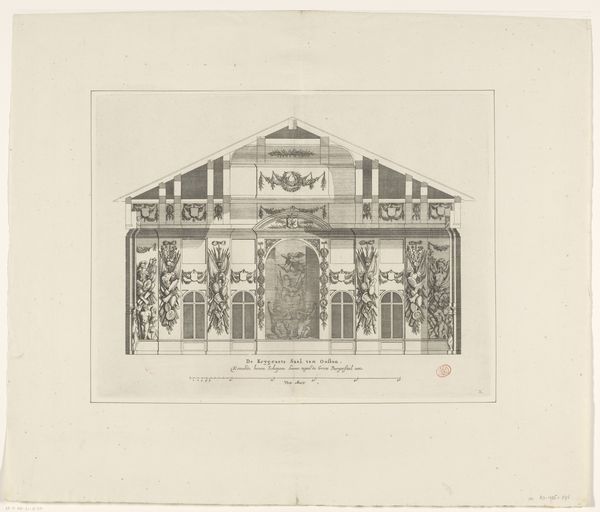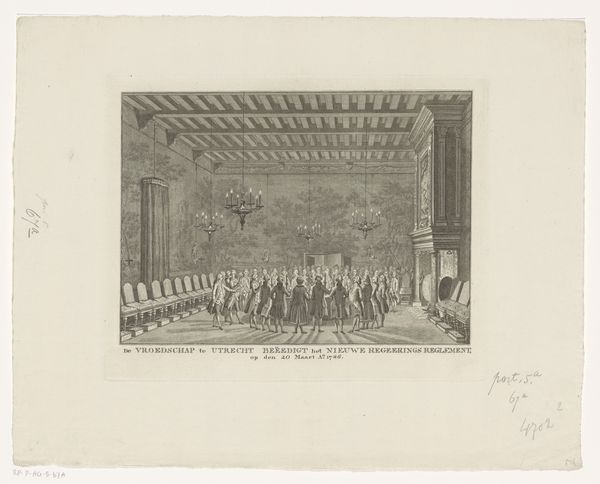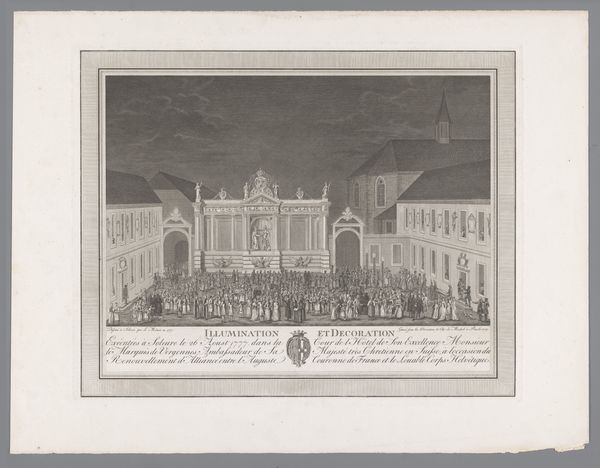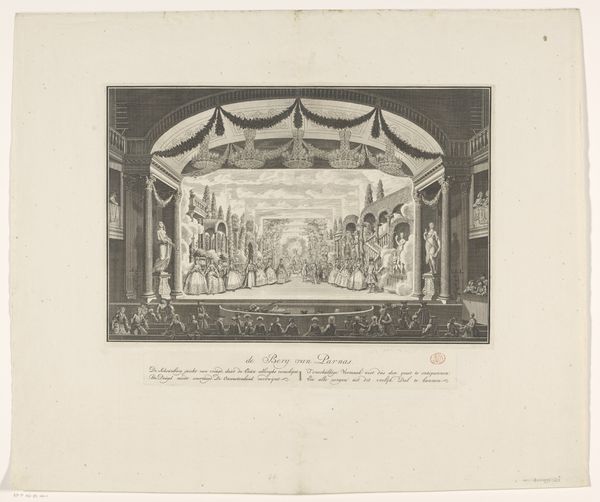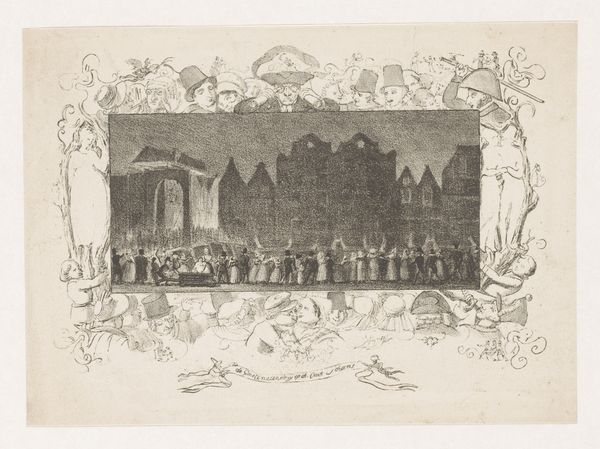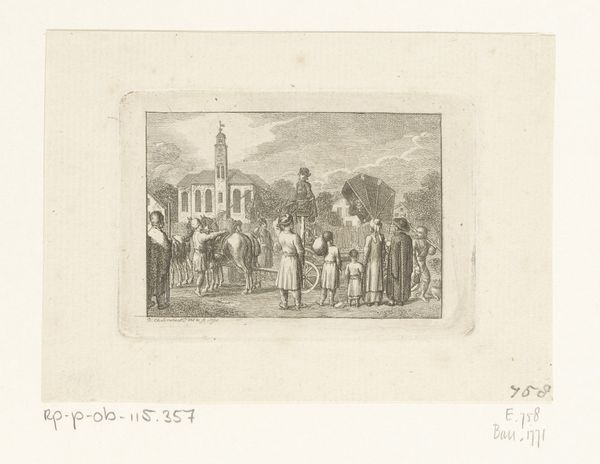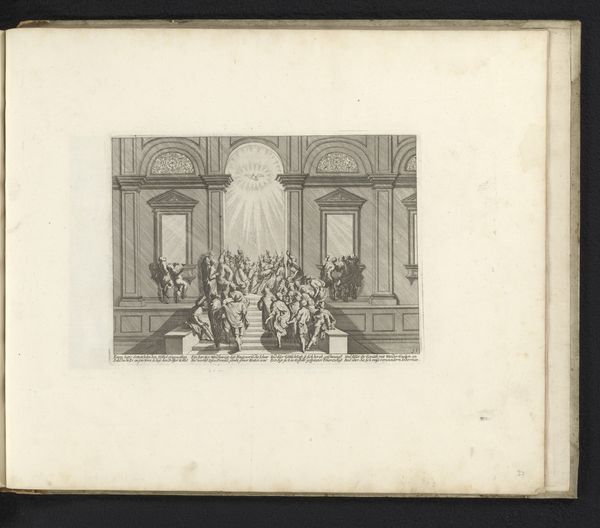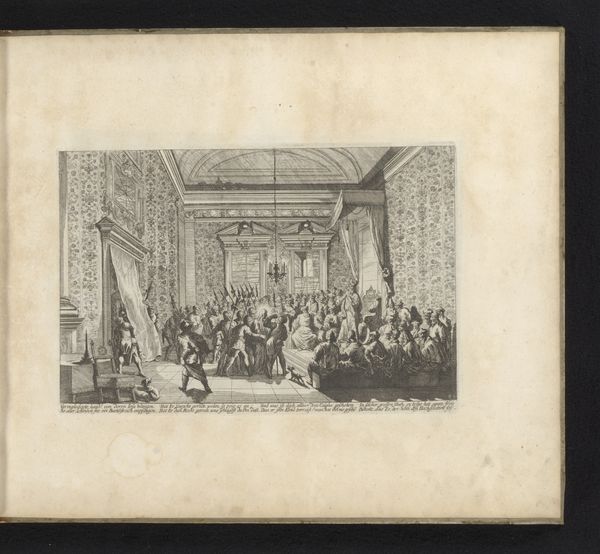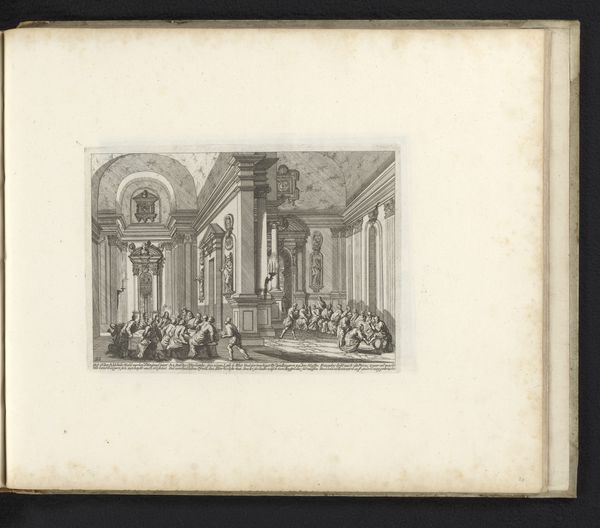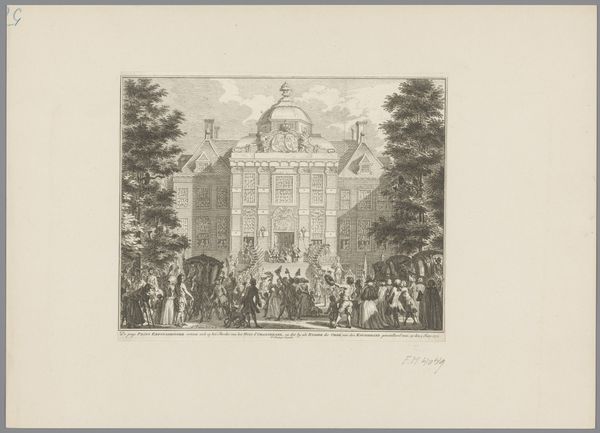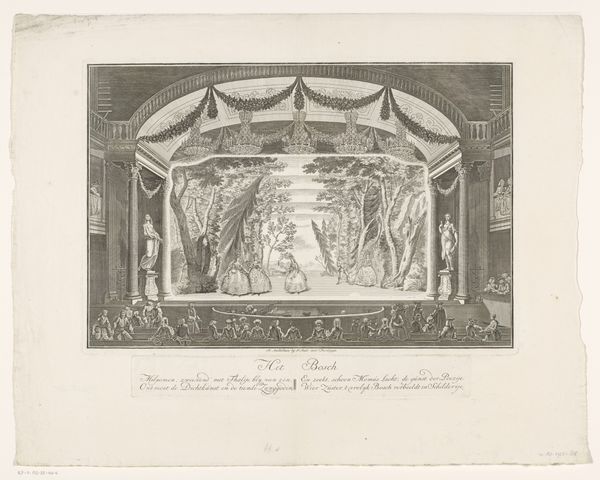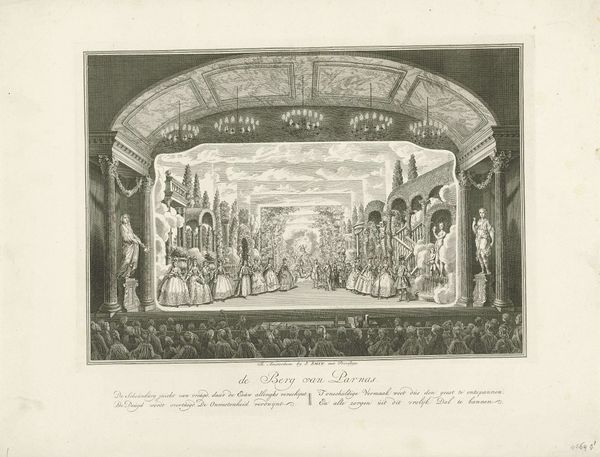
Geïllumineerde triomfpoort bij de viering van de Alliantie met Frankrijk te Utrecht, 1786 1786
0:00
0:00
print, engraving, architecture
#
neoclacissism
# print
#
old engraving style
#
history-painting
#
engraving
#
architecture
Dimensions: height 177 mm, width 241 mm
Copyright: Rijks Museum: Open Domain
Curator: This engraving depicts an illuminated triumphal arch erected in Utrecht in 1786, during the celebration of the alliance with France. Editor: First impression? Feels a bit stiff, like everyone's holding their breath waiting for a cue. Sort of ironic for a celebration, no? The sharp lines of the architecture loom large. Curator: The artist is unknown, but the print adheres strongly to Neoclassical ideals of the late 18th century. Notice the careful depiction of architectural elements, inspired by Roman antiquity, designed to evoke strength, order and Republican virtue. Editor: All those meticulously etched lines…I imagine someone bent over a desk for weeks! I’m thinking, "Impressive technique," but my heart isn’t exactly racing. Though I admit, those glowing figures under the arch are pretty cool; the tiny details add a nice contrast against the solid dark sky behind the construction. Curator: This type of triumphal arch was commonly erected as temporary structure for civic celebrations, especially welcoming foreign dignitaries. This engraving gives us some insight to that celebratory culture, including a large amount of gathered people observing the allegorical figures on display in the artwork. Editor: Yes, you have people down front, very still and reverent. Almost doll-like in their stances. Then your eye shoots right through to this open bright space as a theatrical moment in the history being made. Was it something people genuinely believed in, I wonder, or just going along? Curator: Alliances between states in that era were constantly shifting due to international dynamics, in particular when revolutionary upheavals started in 1789. I imagine these structures embodied very temporary but meaningful gestures within civic pride and patriotism. Editor: So, this alliance with France – did it last? Did the triumph outlive the event, I mean? This etching seems frozen in time, maybe slightly out of time now, really. A monument to a fleeting alliance in delicate lines, that have certainly resisted the pass of time. Curator: Precisely. And in some ways, the print itself becomes a lasting monument – a political document to commemorate what must have been, however ephemeral, a high point in relations between Utrecht and France. Editor: It makes you think how public spectacles try to define certain narratives, while art captures its subtleties… something easily lost or twisted when written down in official narratives. A print as memory, maybe a question about celebrations after all?
Comments
No comments
Be the first to comment and join the conversation on the ultimate creative platform.
